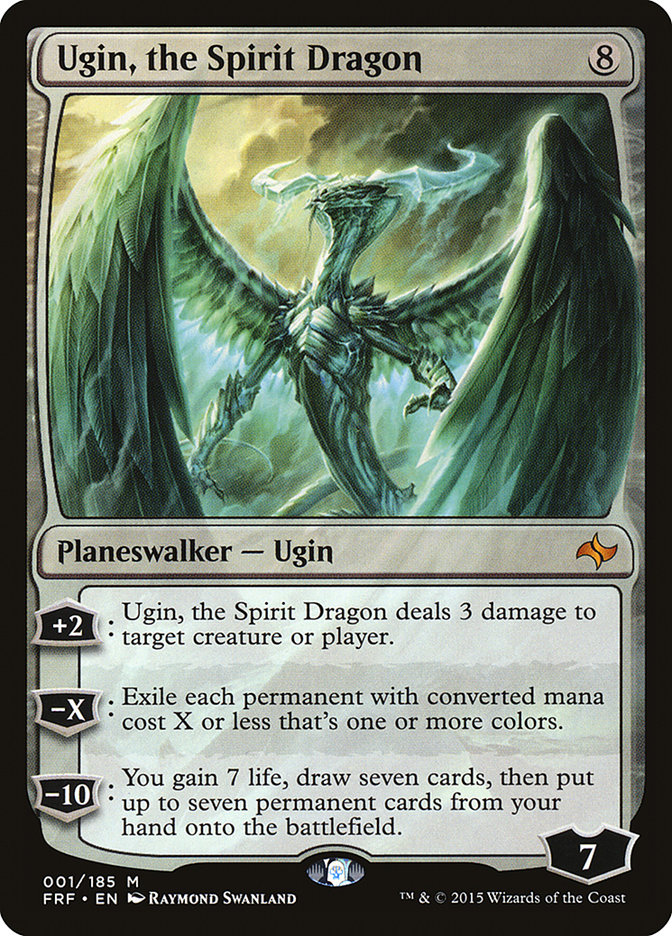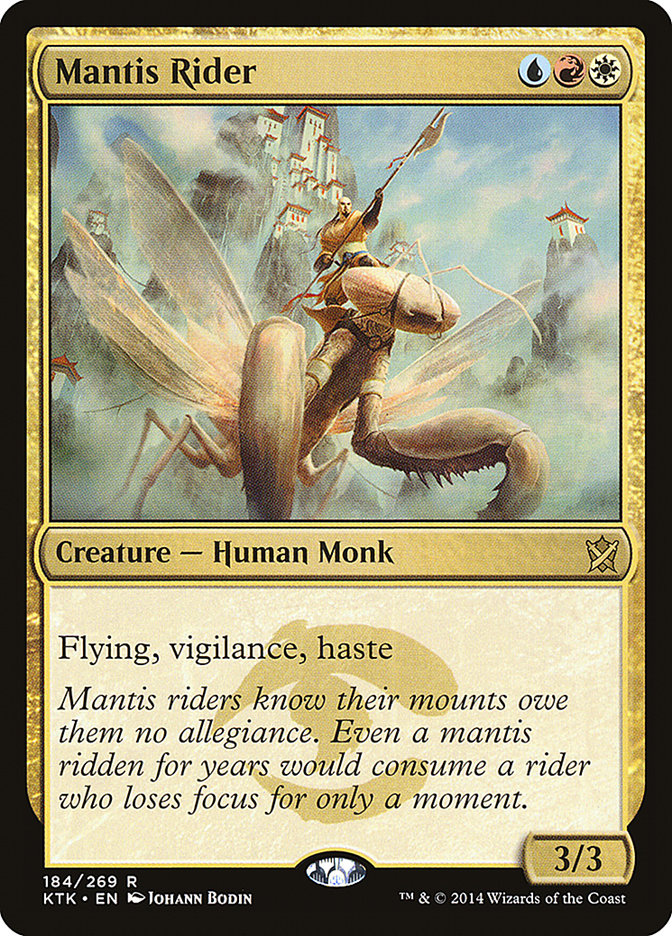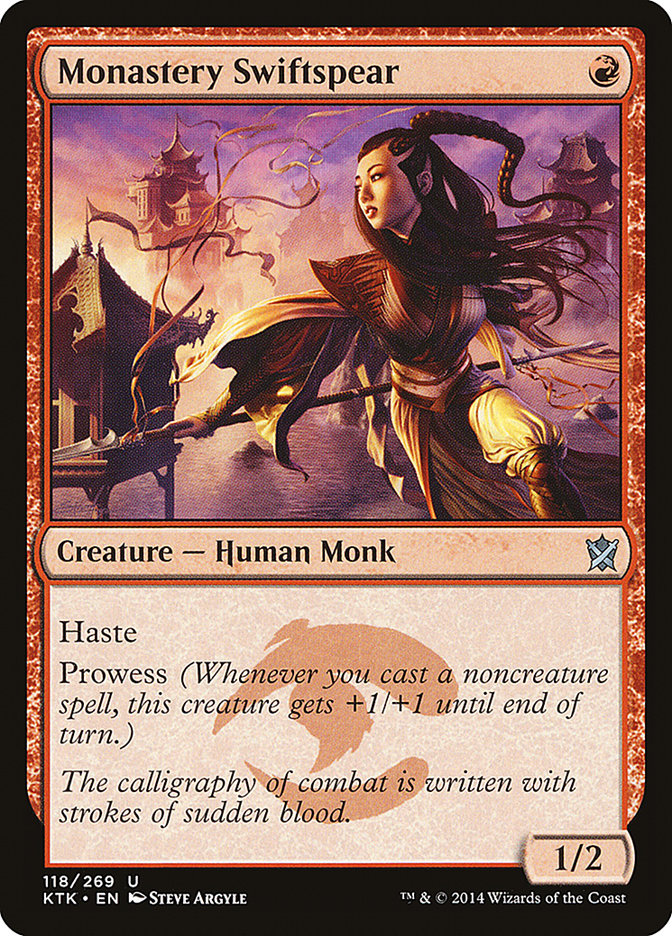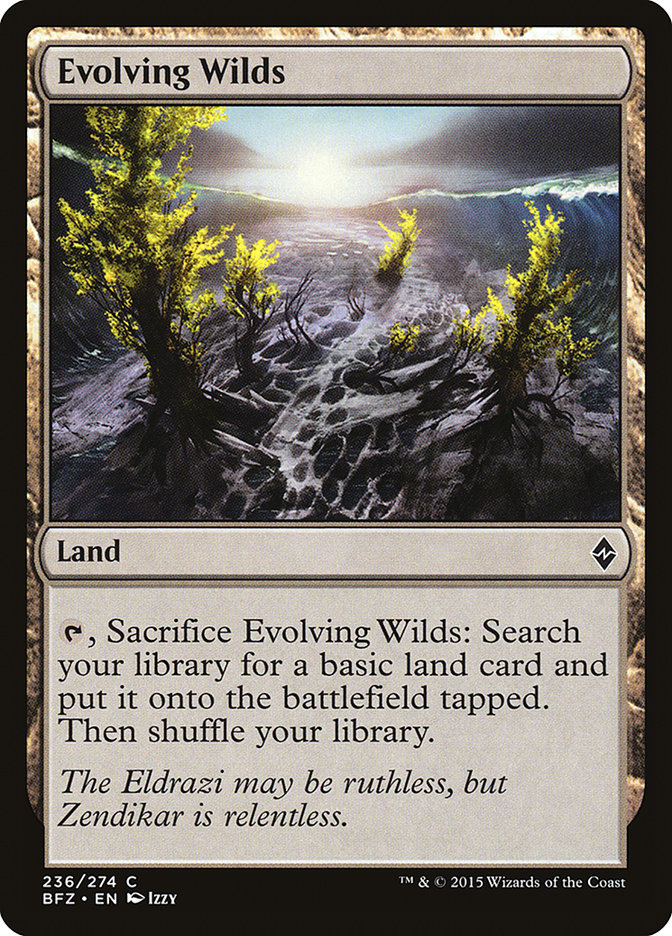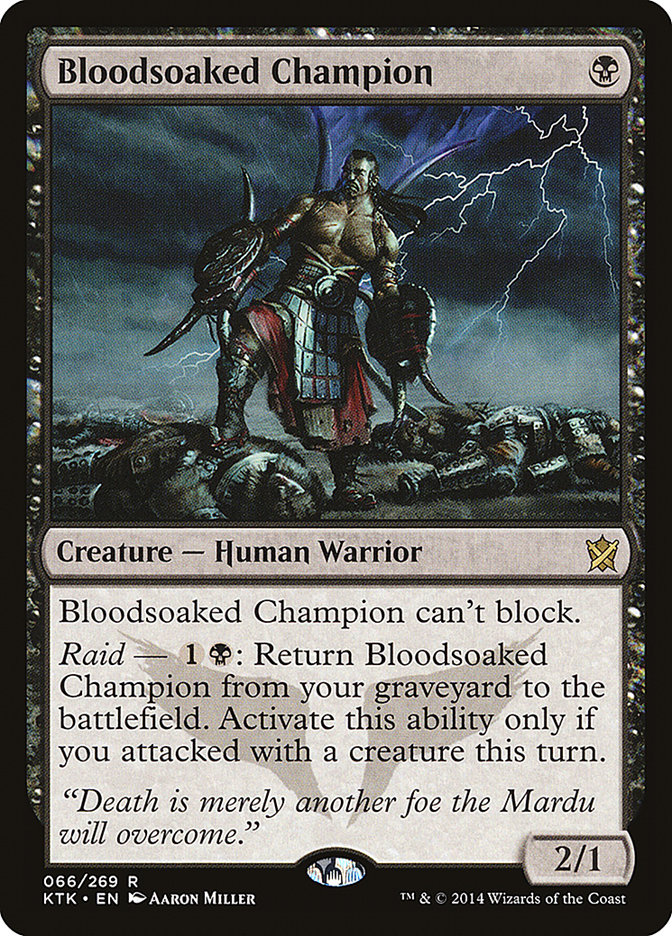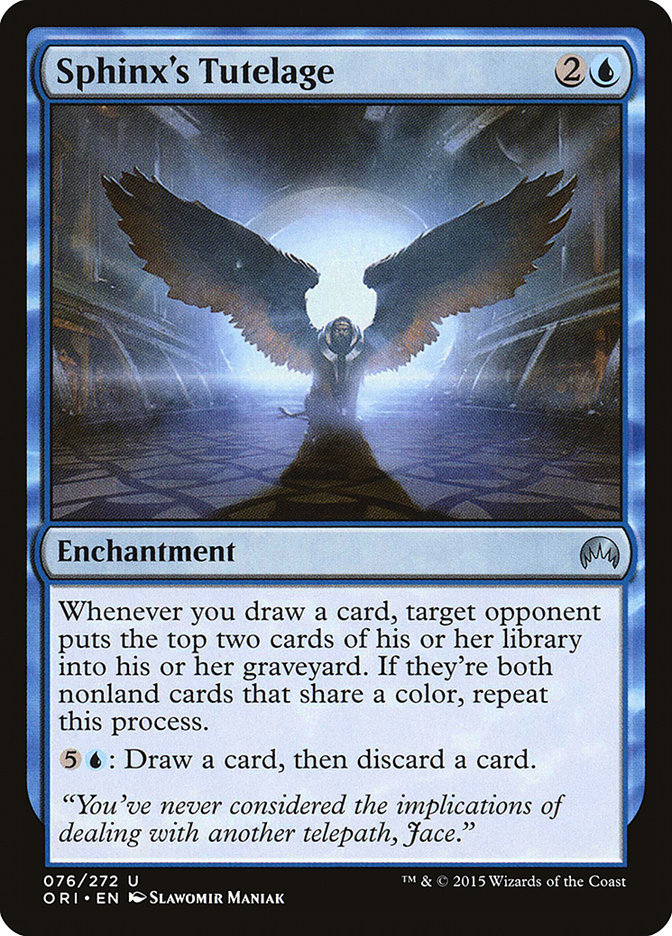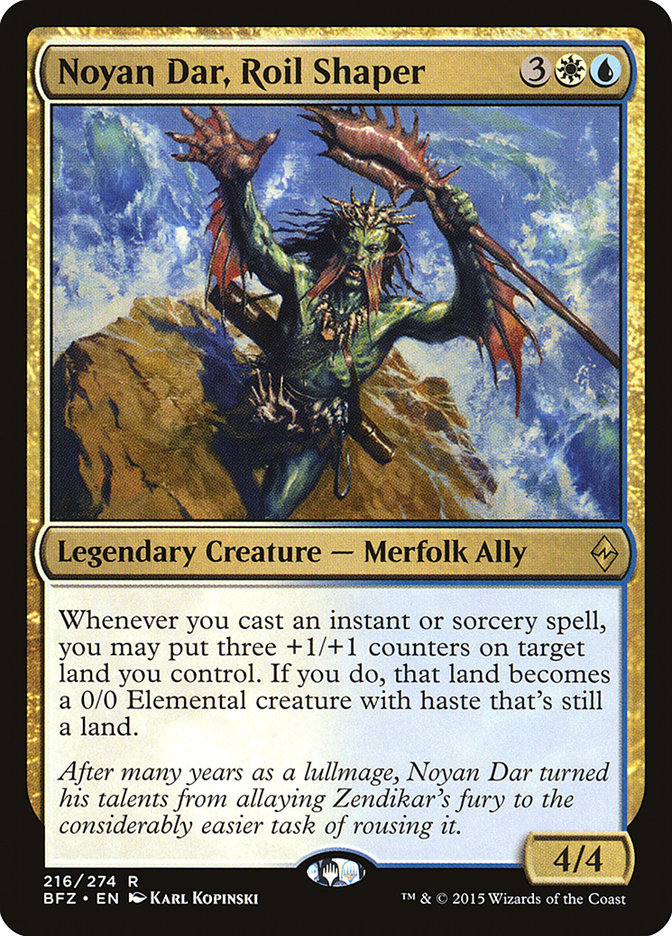It’s been a long time since a rotation had me this excited. Sure, it’s always nice when things change or get freshened up. This time, though, we’re losing
so many powerhouse cards that made things largely unfun and so many “brew-killers” that made it hard to play fun decks, and I for one cannot wait to see
how things unfold from here.
But isn’t that the big question? How will things unfold? Well, that’s not really one question but a whole bunch of them, and this week we’re going
to look at the ten big ones as we gear up for the Open Series in Indianapolis. A thought exercise if you will, helping you get your deck idea nice and
tuned.
1. Has Ugin’s Day Come and Gone?
For decks that played to the board, a resolved Ugin, the Spirit Dragon was one of the hardest things to beat. Control decks that topped out at the big grey
Dragon would just drop him, choose the appropriate number for his minus, and then protect him to victory. With a promised increase in colourless
permanents, Ugin could be more vulnerable to attack by the remnants of the opponent’s board. On the other hand, he loses two natural predators in Hero’s
Downfall and Garruk, Apex Predator. The addition of so much ramp also puts us in a position to cast Ugin nice and early, letting us potentially protect him
with a plus instead of having to clear the board. Will that be enough to get around Ruinous Path, Utter End, and Eldrazi?
2. Is Abzan Control Still the King?
This is the biggest question most people will have for Week 1. Although Siege Rhino did not magically become a terrible card overnight, the rest of the
deck did not fare so well. Even if the loss of early interaction like Thoughtseize and Hero’s Downfall were easily overcome, the deck also lost a card
advantage engine in Courser of Kruphix, a win condition in Elspeth, Sun’s Champion, and a bunch of card selection from their Temples. As we mentioned
above, Ugin is also a lot worse. As good as Dr CJ Rhinosky is, he’s not going to win you enough games on his own. Will Dragonlord Dromoka slide in? Are
Gideon, Ally of Zendikar and Ob Nixilis Reignited enough to compensate? Is Transgress the Mind a reasonable replacement for Thoughtseize? Is Nissa,
Vastwood Seer good enough to carry a bigger load? Has Sunscorch Regent’s time finally come?
3. Is Jeskai Aggro the New Target?
If we’re looking for decks that were good and lost little, Jeskai Aggro is likely near the top of that list. Sure, Goblin Rabblemaster is gone, but there
have been several lists that didn’t run a single copy of that card even before now. Lightning Strike and Stoke the Flames are the far bigger losses, and
with no obvious replacements. The remainder of the deck is almost entirely untouched. Mantis Rider is in a very sweet spot: immune to Roast, Valorous
Stance, Sultai Charm, Wild Slash, Seismic Rupture, Ultimate Price…basically, we’re looking at a card that is very hard to kill. Seeker of the Way and/or
Soulfire Grand Master have often split five or six slots in the list; that may increase to full sets of each. Exquisite Firecraft and Fiery Impulse are
objectively not as good as Strike and Stoke, but can they play a role in the new format? Does the flexibility of Jeskai Charm mean we want more of them?
Will the cards that do answer Mantis Rider, like Abzan Charm and Rending Volley, start to be more prevalent? Could cards like Roil Spout, Guardian of
Tazeem, and Stasis Snare see some play in the list?
4. What’s the New Face of Ramp?
With Nykthos, Shrine to Nyx relegated to Modern, devotion strategies are no more. Elvish Mystic, Sylvan Caryatid, and Voyaging Satyr are joining the
exodus, along with midrange threats like Polukranos, World Eater and Arbor Colossus. Hornet Queen and Genesis Hydra are also gone as powerful top ends. If
there’s one thing that BFZ isn’t lacking, though, it’s top end. The obvious first choice is Ulamog, and it will make a fine companion for Dragonlord Atarka
at the top of the curve. Unlike the old devotion deck though, we don’t have cards like Genesis Hydra and Polukranos that are both excellent when you have a
lot of mana and still solid earlier on. Can Oblivion Sower fill that role? Will Surrak, the Hunt Caller start to see some play? Creature-based ramp is
either dead or much slower, so will we see decks adopting Leaf Gilder alongside Rattleclaw Mystic or will there be a switch to spell-based ramp? Natural
Connection, From Beyond, Explosive Vegetation, and Nissa’s Expedition are all strong contenders, and Hedron Archive is also a potential ramp spell that can
refill your hand once you have enough mana on board. At issue is whether or not the deck has enough to do in the middle of the curve before it draws or can
cast its game winners. Are Conduit of Ruin, Surrak, and Oblivion Sower enough?
5. Is Mono-Red Viable?
One of the hallmarks of post-rotation Standard is often Mono-Red Aggro being the deck to beat. The popularity often dies down as people adapt to the
aggressive strategies and gain some ability to outlast the red onslaught. Over the past year we have seen red decks defy that, winning two Pro Tours and
the last big Standard event before rotation. Unlike the Jeskai decks, the burn spells that are rotating have a huge impact on red. Stoke and Strike are
commonly joined by Searing Blood in the deck, and that triple blow is a solid right cross to the jaw. Foundry Street Denizen and Obelisk of Urd also go
away, but perhaps the biggest loss is Eidolon of the Great Revel. Of course, the deck loses a lot of predators that made it hard to play when people wanted
to beat it: Drown in Sorrow, Bile Blight, Courser of Kruphix, Anger of the Gods, and Sylvan Caryatid all rotate. Can Mono-Red survive by becoming more
creature-based? Could red aggro actually win games through the card advantage provided by Ire Shaman, Abbot of Keral Keep, and Outpost Siege?
6. How Good are the Landfall Options?
The last time landfall was printed we had Steppe Lynx, Plated Geopede, and Adventurer’s Gear to really put pressure on opponents. Although our creature
options are decidedly less explosive than they were in the original trip to Zendikar, the question as to their power level relative to an apparently slower
environment is a pertinent one. At each spot on the curve up to four mana, we have solid options with just a single land drop. Once we start doing things
like fetching, the power level spikes. If we are able to make use of Slab Hammer in combination with Atarka’s Command or Swell of Growth, the potential for
early game-ending attacks is off the charts. The problem is that the deck is weak without those incredible draws, playing as it must a high number of lands
and yet still needing live draws to apply any pressure. The spell lands can help mitigate that somewhat, though the green one is less than useful here. Can
we find the right balance of land drops to landfall? Does the curve need to go above Grove Rumbler at four mana? Do we want Zendikar’s Roil to insure
against flood? Is Omnath, Locus of Rage just too greedy? Is the power of the premium draw worth the unquestioned downside of the draw that loses to two
removal spells?
7. How Many Colours is too Many?
Sharper minds than mine have written many thousands of words on manabases in the new Standard. I’ve even seen people lamenting that they have no idea how
to build one in this format. What that says to me is that we can start to get greedy for the first time since Innistrad/Return to Ravnica
Standard. More to the point, cards like Bring to Light and Woodland Wanderer actively encourage us to play as many cards as we can and reward us handsomely
for doing so. Five-colour toolbox brews centered on Bring to Light have already started to crop up, a thought that makes me all tingly. As with any
rainbow-tinged deck, the manabases are a little shaky and prone to being attacked. Will land destruction, namely in the form of Crumble to Dust, see any
sort of play to combat these decks? Will the aggro decks be fast enough to punish the inconsistent mana? Will three-colour decks splash a fourth to get
extra fetchable lands across all the colours? That is the most interesting question to me, allowing Abzan to splash for Crackling Doom or Mardu to play
Siege Rhino with little in the way of sacrifice. Will that be something that is pure upside, or is the potential there to punish the greedier ones?
8. What Does Aggro Look Like?
Historically, the only thing that keeps five-colour decks in check is a good, consistent beatdown strategy. There are a few different options presenting
themselves as we head into new ground, but which one is best? Can any of them make the grade? Devoid Aggro seems best positioned to do so, but if we don’t
draw Herald of Kozilek or Ruination Guide, that strategy might be too weak, even with Hangarback Walker and Ghostfire Blade as options. Landfall we looked
at above, and the Ally deck seems more set up for combo action than a dedicated aggressive strategy. Is Hardened Scales going to be better with Canopy
Vista replacing Temple of Plenty, given the lack of cards rotating from it? Is it time for B/W Warriors and its plethora of one-mana 2/1s to come out and
play? With Radiant Flames, Languish, Crux of Fate, End Hostilities, Tragic Arrogance, and Planar Outburst all in the format, is aggro even worth trying?
9. Is Mill Still a Thing?
The emergence of U/R Sphinx’s Tutelage decks was one of the surprises of the Magic Origins format, winning Grand Prix Sani Diego and throwing a
spanner in the works of Abzan dominance. The pending threat of Eldrazi titans, which all shuffled your graveyard back into your deck last time we saw them,
made the idea of milling a scary one, but that threat is so far unfounded. The deck loses very little, with Anger of the Gods and Whelming Wave being the
biggest ones. All the card draw is still there, but without ways to sweep the board early, can the deck hang on in the face of early aggression? Is
Displacement Wave good enough, with the fact that it bounces Jace and potentially Sphinx’s Tutelage? Can Radiant Flames replace Anger of the Gods? To make
that work, the deck will likely need a third colour, but if that colour is black, the deck gets access to Crux of Fate and/or Languish as well. Can we
safely go deep enough into black for those? Will the third colour and the extra fetches leave the deck more vulnerable to attack by aggro?
10. What are the Sleepers?
Without fail, someone always comes up with a strategy out of left field. U/R Sphinx’s Tutelage was that strategy last time around, with the Thopter deck
also surprising people. What could we see this time? Well there’s Noyan Dar, just begging someone to figure out how to bust him wide open with cheap
cantrips and maybe Monastery Mentor and/or Jeskai Ascendancy. Catacomb Sifter fits right into an Evolutionary Leap/Nantuko Husk/Smothering Abomination deck
that could well leverage Zulaport Cutthroat to get some serious velocity and selection going. The various Retreats seem to be primed for combo
exploitation, with the blue one already getting people excited in Modern. Fathom Feeder and Sire of Stagnation both excite the heck out of me, and I really
want them to be good. Together. And of course, someone will try to win with Win Cat, because Win Cat.
As we hurtle towards the weekend, the answer to these questions and more is very, very close. It’s so exciting, isn’t it?! I know I will be glued to my TV
all weekend, notepad and binders in hand, figuring out what I want to be doing with these new cards when I get my chance to play with them. These first few
weeks are a brewer’s paradise, and I been spending most my life living in one.
Until next time…Brew On!

